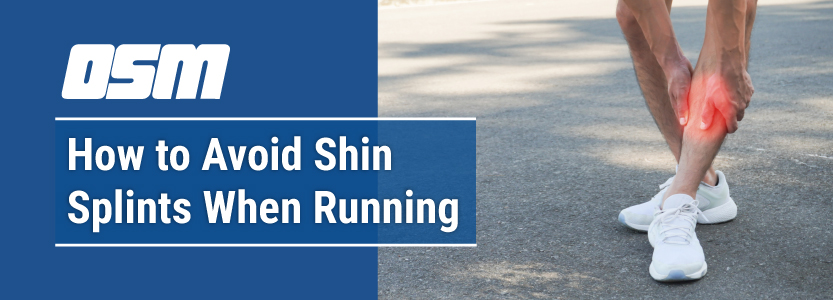How to Avoid Shin Splints When Running
Article featured on Summit Ortho
You’ve finally done it — you’re off the couch and out on the running trail. You’re excited to begin your running journey, and the first few days feel pretty good. But then, you start to notice pain on the front of your shin. Your shins begin to feel more and more uncomfortable, and it’s really hard to run. You have developed shin splints, one of running’s most common injuries. Read on to learn how to avoid shin splints when running.
What are shin splints?
Shin splints are caused by inflammation in the muscles and tendons of the lower leg. They often happen to new runners because their bodies are not used to the increased stress in this area. In their enthusiasm, new runners do too much too soon and develop shin splints from overuse.
It’s important to differentiate shin splints from stress injuries, and they can present with similar types of pain. If you’ve had shin splint pain for more than a few weeks and it continues to worsen, you should see a sports medicine provider for evaluation.
Can I still run with shin splints?
Yes, you can still run with shin splints, but you should be careful. You can ice the area after running to help with the inflammation. It’s also a good idea to slow down a bit and not go for longer distances just yet. Your body will begin to adjust and strengthen the area in response to the increased stress, but it does take time.
Shin splints can also be caused, or made worse, by running in shoes without enough cushioning. The best running shoes for shin splints have good cushioning, shock absorption, and structure. If you’re feeling shin splint pain, it may be (past) time for a new pair.
Tips to avoid shin splints when running
To avoid shin splints, don’t increase the volume and intensity of running at the same time. If you’re adding distance to your weekly mileage, try not to add speed work at the same time.
Here are some other tips:
- Increase your running distance slowly.
- Make sure your shoes are in good condition — Shoes can wear out after just a few hundred miles of use.
- Change up your running surface — Running on a hard surface makes a high-impact exercise even higher impact. Try a softer surface, like a dirt trail or a treadmill rather than a concrete sidewalk.
- Rest — Running is wonderful exercise, but it also puts stress on the body. Take time to rest and recover.
- Vary your routine — Mix it up with some low-impact exercise days. You could swim or cycle, for example, and get good cardiovascular exercise without the pavement-pounding stress.
The Orthopedic & Sports Medicine Center of Oregon is an award-winning, board-certified orthopedic group located in downtown Portland Oregon. We utilize both surgical and nonsurgical means to treat musculoskeletal trauma, spine diseases, foot and ankle conditions, sports injuries, degenerative diseases, infections, tumors and congenital disorders.
Our mission is to return our patients back to pain-free mobility and full strength as quickly and painlessly as possible using both surgical and non-surgical orthopedic procedures.
Our expert physicians provide leading-edge, comprehensive care in the diagnosis and treatment of orthopedic conditions, including total joint replacement and sports medicine. We apply the latest state-of-the-art techniques in order to return our patients to their active lifestyle.
If you’re looking for compassionate, expert orthopedic and podiatric surgeons in Portland Oregon, contact OSM today.
Phone:
Address
17355 Lower Boones Ferry Rd Suite 100A
Lake Oswego, OR 97035
Hours
Monday–Friday
8:00am – 4:30pm



